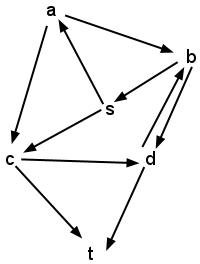CS35: Final Exam Study Guide
This study guide includes topics covered since Quiz 6; you should also study all concepts from earlier in the course. The earlier study guides are available here: Quiz 1, Quiz 2, Quiz 3, Quiz 4, Quiz 5, and Quiz 6.
You should be able to define or explain the following terms:
- cycle
- directed acyclic graph (DAG)
- topological sort
- trees
- spanning tree, minimum spanning tree (MST)
You should be familiar with the following C++-related concepts:
- valgrind
Practice problems
- Consider the following set of courses and their prerequisites:
- PHYS 005: none
- PHYS 007: PHYS 005 and MATH 025
- PHYS 008: PHYS 007 and MATH 033
- PHYS 014: PHYS 008, MATH 027, and MATH 033
- PHYS 050: MATH 027 and MATH 033
- PHYS 111: PHYS 014 and MATH 033
- PHYS 112: PHYS 014, PHYS 050, and MATH 033
- PHYS 113: PHYS 111 and MATH 027
- PHYS 114: PHYS 111 and MATH 033
- MATH 025: none
- MATH 027: none
- MATH 033: MATH 025
- In lecture we saw a variant of recursive depth-first search that also
determined if the graph contained a cycle. Recursive depth-first search
is extremely simple and elegant if the algorithm does not need to track
additional information or return any value:
dfs(G, src): // This function initializes the isVisited = new dictionary // dictionary and calls the for each vertex v in G: // recursive helper function. isVisited[v] = false recursiveDfs(G, src, isVisited) recursiveDfs(G, src, isVisited): // This recursive function isVisited[src] = true // searches the graph. for each neighbor v of src: if !isVisited[v]: recursiveDfs(G, v, isVisited)- Execute dfs on the following graph, using s as the source
vertex. Draw the stack frame diagram for the program as it
executes. (Assume that isVisited refers to a single copy of the
dictionary for all frames of the stack.)

- Modify the pseudocode above to accept a second vertex, dest, as an argument. Return true if there is a path from src->dest in G, and return false otherwise.
- Modify the pseudocode again to return the length of some src->dest path (not necessarily the shortest path) if there is a path from src to dest in G. If there is no src->dest path, return -1.
- Execute dfs on the following graph, using s as the source
vertex. Draw the stack frame diagram for the program as it
executes. (Assume that isVisited refers to a single copy of the
dictionary for all frames of the stack.)
- Execute Prim's algorithm to find a MST of the following graph using
s as the initial vertex. For each step of the algorithm, show
which edges and vertices have been selected for the MST up to that step.

- Find the smallest weighted, undirected graph G such that G has multiple distinct MSTs.